One of the most famous Belgian artists in history produced thought-provoking images that have become some of the best-recognized paintings in the world.
René Magritte (1898-1967) was a Surrealist artist who often depicted common objects in such a way that his paintings didn’t make sense.
Although he studied at the Académie Royale des Beaux-Arts in Brussels between 1916 and 1918, he never liked the academic approach to painting.
The concept behind his art was to have the viewer pose questions about what we perceive to be the ultimate reality. Is it real? Or is it merely an image of something we believe to be real?
By the 1960s, Magritte’s paintings were already world-famous and used in various forms of media. This further added to the iconic nature of his Surrealist art.
In this article, you’ll discover some of the most famous paintings by René Magritte so you can learn all about this influential Belgian painter.
1. This is not a Pipe
- Date created: 1929
- Dimensions: 60.33 × 81.12 centimeters (23.75 × 31.94 inches)
- Location: Los Angeles County Museum of Art, Los Angeles, United States
This is not a Pipe is the title of a painting by René Magritte that is also known as “The Treachery of Images.” It’s one of his best-known works and was completed shortly after he dedicated himself full-time to his art in the late 1920s.
His career didn’t take off initially because people didn’t understand the concept behind his art. His goal was to make people think about what they saw. This is is why he mentioned that this wasn’t really a pipe because he couldn’t stuff it and it only serves as a representation of the real thing.

2. The Lovers
- Date created: 1928
- Dimensions: 54 x 73.4 centimeters (21.37 x 28.87 inches)
- Location: MoMA, New York City, United States
The Lovers is one of the most peculiar paintings by Magritte but has several deeper meanings. The first and most obvious one is that it depicts a cold and distant relationship between two lovers. This is emphasized by the fact that they are portrayed with a fabric in front of their faces.

A more disturbing notion is that it depicts the artist’s mother who committed suicide by drowning herself in a river. When her lifeless body was hauled out of the water, her dress was covering her face similar to the fabric covering these two lovers.
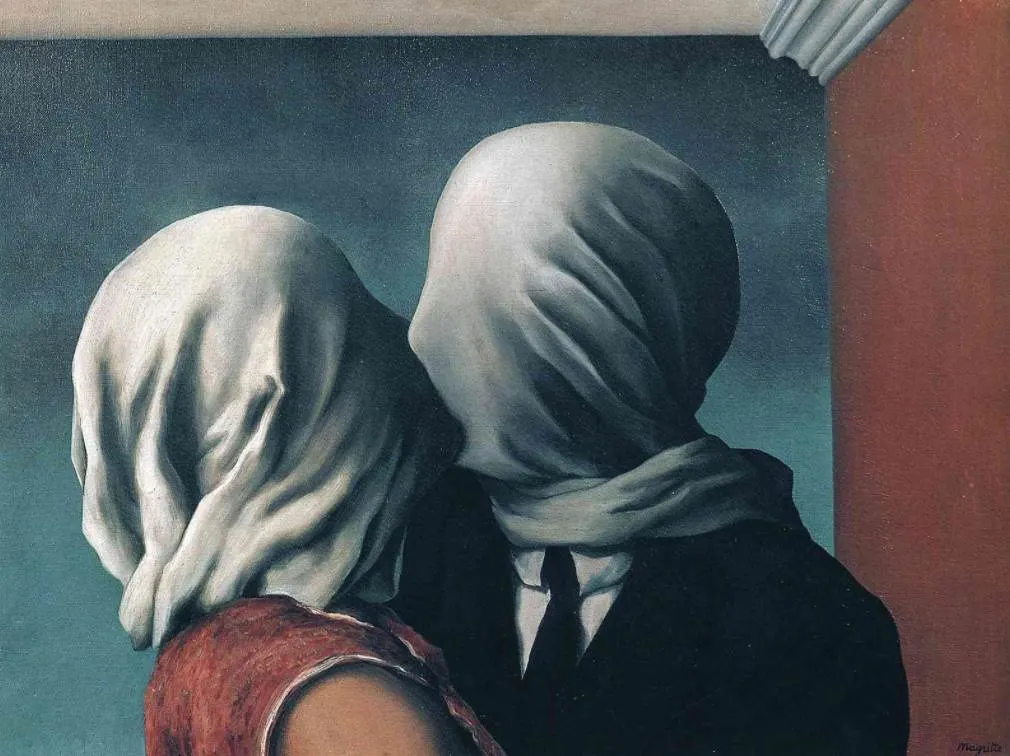
3. The False Mirror
- Date created: 1929
- Dimensions: 54 x 80.9 centimeters (21.25 x 31.87 inches)
- Location: MoMA, New York City, United States
The False Mirror is one of the many paintings in the oeuvre of René Magritte that features a cloudy sky. Completed around the same time as his famous work depicting a pipe, it was another painting that only received a lukewarm reception when it was first displayed.
The cloudy sky takes up the space that is normally occupied by the iris of the eye. Magritte painted 3 versions of this work which was originally referred to as “La Faux Mirroir.” He also completed a version on paper in 1952 and this sketch sold for £373,250 at auction in 2010.

4. The Son of Man
- Date created: 1964
- Dimensions: 116 × 89 centimeters (45.67 × 35 inches)
- Location: Private collection
The Son of Man is the title of another painting by Magritte that can be described as one of his best-recognized works. It was completed during the final decade of his life and was painted as a self-portrait with a large number of peculiar twists.
The man stands in front of a background made up of the sky and the sea. An apple floats in front of his face but we can, however, see his left eye peaking at the viewer. Another peculiar element that has baffled art critics is the left elbow of the man which appears to bend backward.
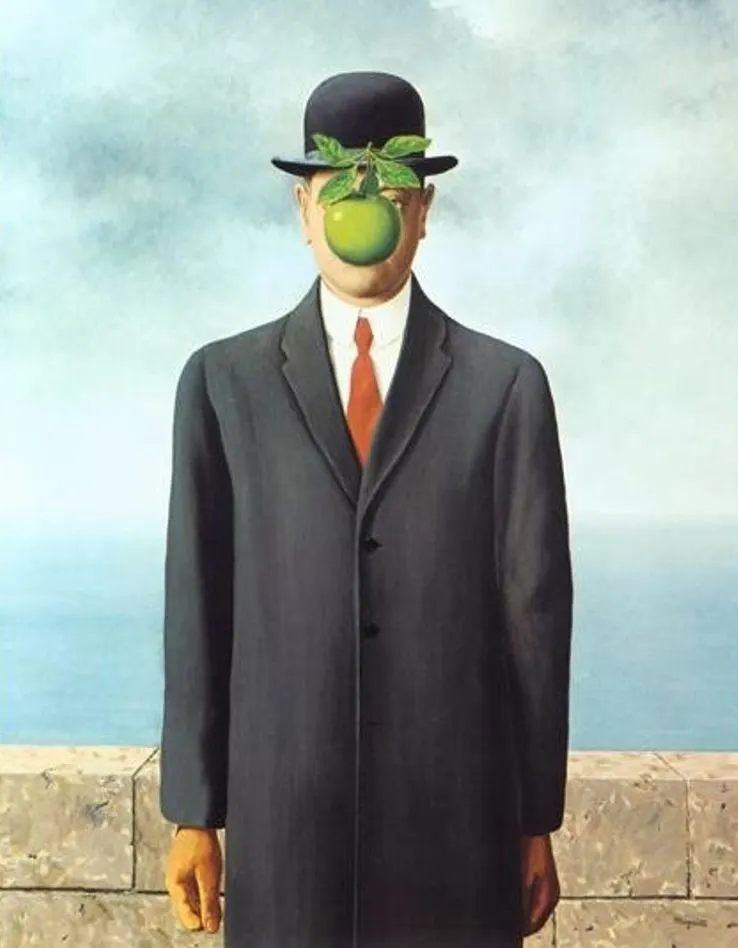
5. Personal Values
- Date created: 1952
- Dimensions: 80 x 100 centimeters (31.49 x 39.37 inches)
- Location: San Francisco Museum of Modern Art (SFMOMA), San Francisco, United States
Personal Values is the title of a painting that combines several of the most common elements in Magritte’s oeuvre. These include common items which are situated in a room that is decorated with wallpaper made out of a cloudy sky.
None of the elements, such as a giant comb on a small bed and a glass that takes up a large space in the center of the room, are accurate depictions in terms of size. It was Magritte’s expression of transforming familiar items into what he referred to as a “defiance of common sense.”

6. Not to Be Reproduced
- Date created: 1937
- Dimensions: 81.3 × 65 centimeters (32 × 26 inches)
- Location: Museum Boijmans Van Beuningen, Rotterdam, Netherlands
Not to Be Reproduced is a painting that was commissioned by British poet Edward James (1907-1984), a man who was a huge fan of the Surrealist movement and therefore an important patron of Magritte. Because of this, it’s believed to depict James seen from the back.
We don’t see the man’s face, even though he appears to be looking in a mirror. This doesn’t make sense because his reflection also shows his backside. Magritte painted another portrait of James from the front called “The Pleasure Principle” (1937) but in this work, his face is completely illuminated.
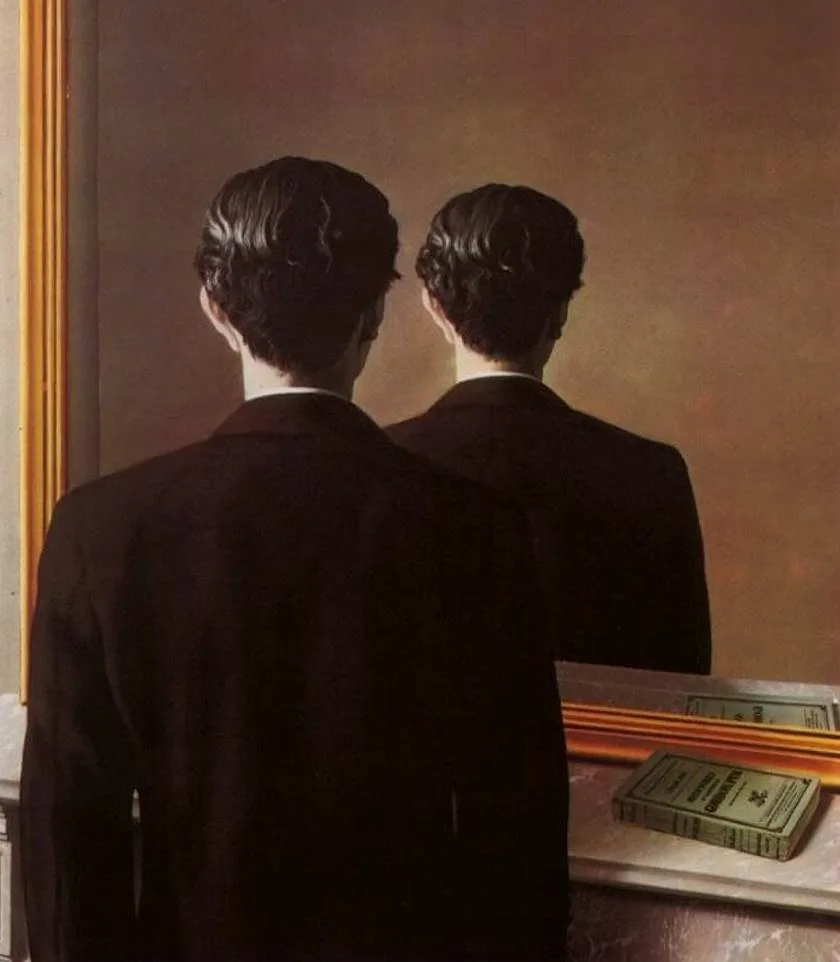
7. Golconda
- Date created: 1953
- Dimensions: 81 × 100 centimeters (31.9 × 39.37 inches)
- Location: The Menil Collection, Houston, United States
Golconda is the title of a Magritte painting that depicts a rainy day, except for the fact that the rain is presented by men wearing black overcoats and bowler hats. The men look fairly identical and appear to be either falling down or motionless in mid-air.
May art historians have concluded that Magritte meant to depict the thin line between groups of people and individuality. The same applies to the suburban environment in which this scene takes place because the houses only feature trivial differences.
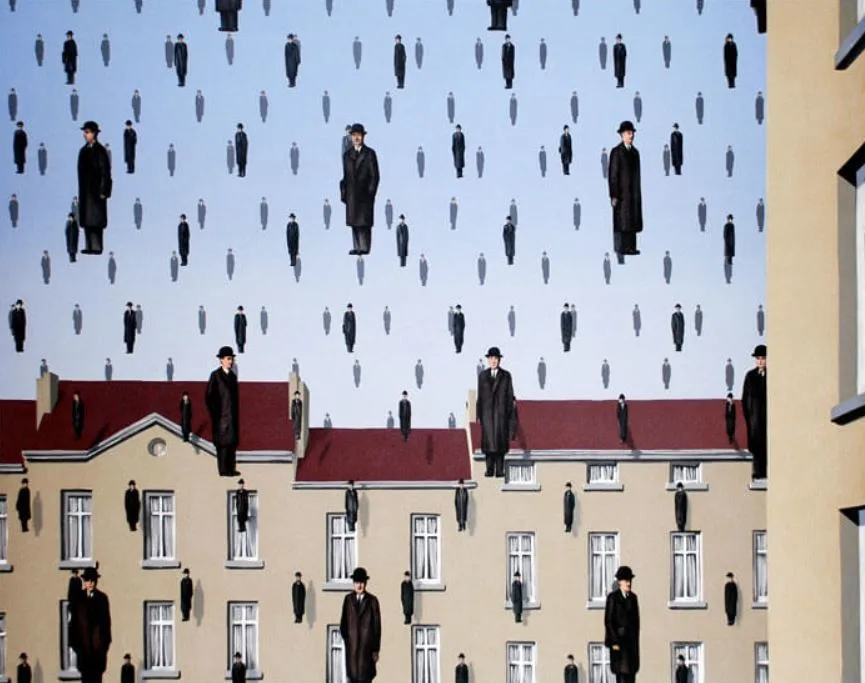
8. The Empire of Light
- Date created: 1954
- Dimensions: 195.4 x 131.2 centimeters (76.92 x 51.65 inches)
- Location: Peggy Guggenheim Collection, Venice, Italy
The Empire of Light is the title of a painting by Magritte that was one of his most favorite subjects. The fact that he replicated the same concept 27 times makes this pretty clear. All of these works feature a clear sky on top with illuminated streets at night at the bottom.
This paradoxical element was a popular concept of the artist. This was also the case for collectors who were lining up at the 1954 Venice Biennale where the painting was first exhibited. He completed several large versions because he knew they would sell like hotcakes at this event.
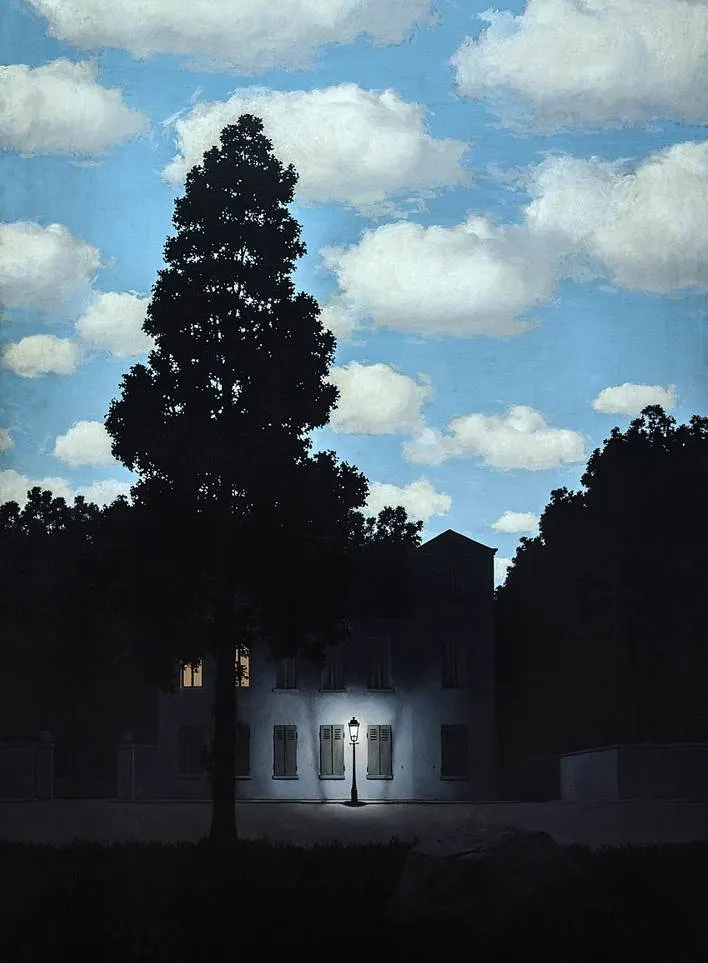
9. Time Transfixed
- Date created: 1938
- Dimensions: 147 × 98.7 centimeters (57.87 × 38.86 inches)
- Location: Art Institute of Chicago, Chicago, United States
Time Transfixed is another painting that was commissioned by British poet Edward James and arguably one of his works that fits the definition of being a “Surrealist painting” the most. Perhaps that’s because it reminds me of Dalí’s world-famous Persistence of Memory (1931) with its melting clocks.
Magritte’s painting depicts an LMS Stanier 5MT Black 5 4-6-0 Locomotive that emerges out of a fireplace. The steaming train enters an empty room in which a large mirror reflects a clock and just one of the two candlesticks. The Belgian painter referred to the works as a combination of a mysterious locomotive and a familiar scene of a dining room.

10. The Human Condition
- Date created: 1933
- Dimensions: 100 × 81 centimeters (39 × 32 inches)
- Location: National Gallery of Art, Washington D.C., United States
Speaking of mysterious paintings, Magritte’s work titled “The Human Condition” definitely fits this description. It’s one of four versions that the artist completed in the 1930s (three versions) and 1945 that depict a painting frame within a painting.
I think it’s best that I let the artist describe this work in his own word so you can make sense of it:
In front of a window seen from inside a room, I placed a painting representing exactly that portion of the landscape covered by the painting. Thus, the tree in the picture hid the tree behind it, outside the room. For the spectator, it was both inside the room within the painting and outside in the real landscape.

